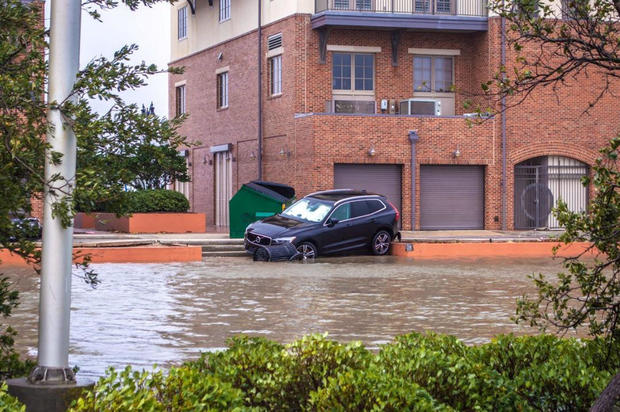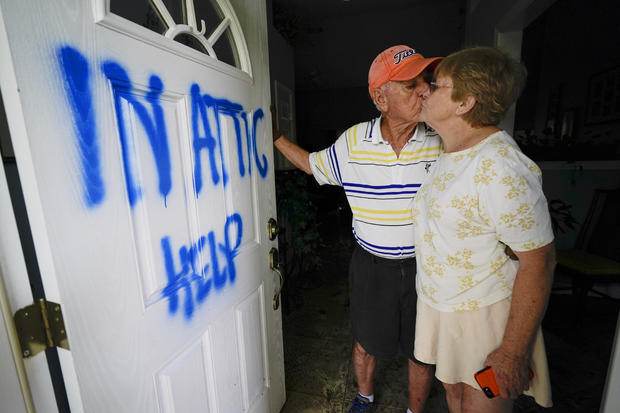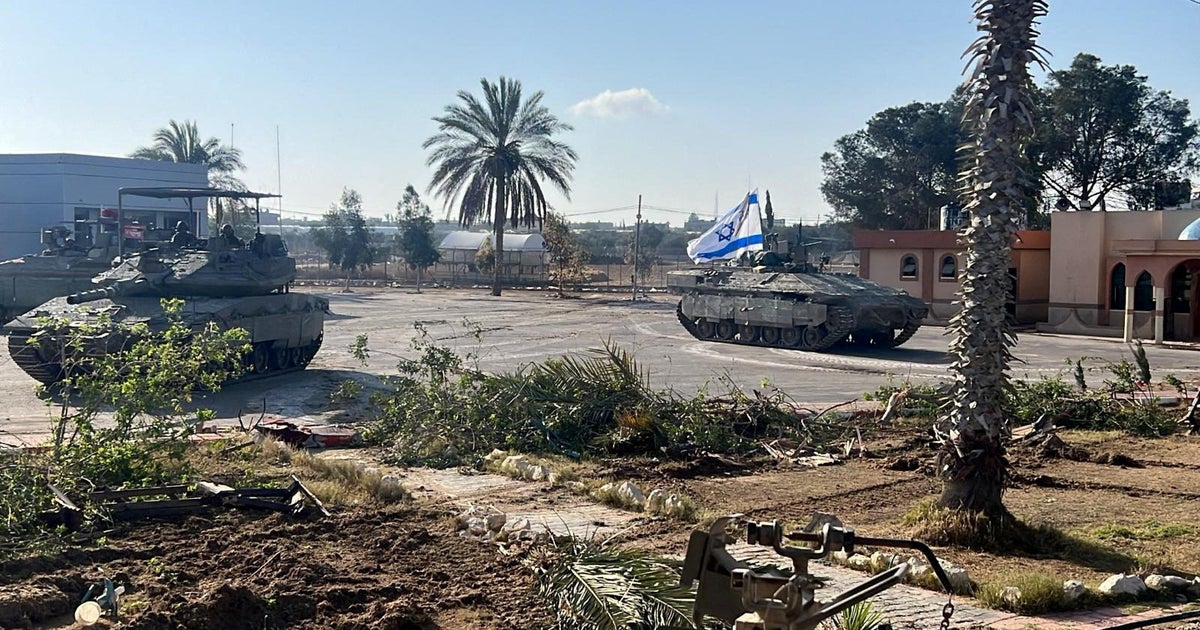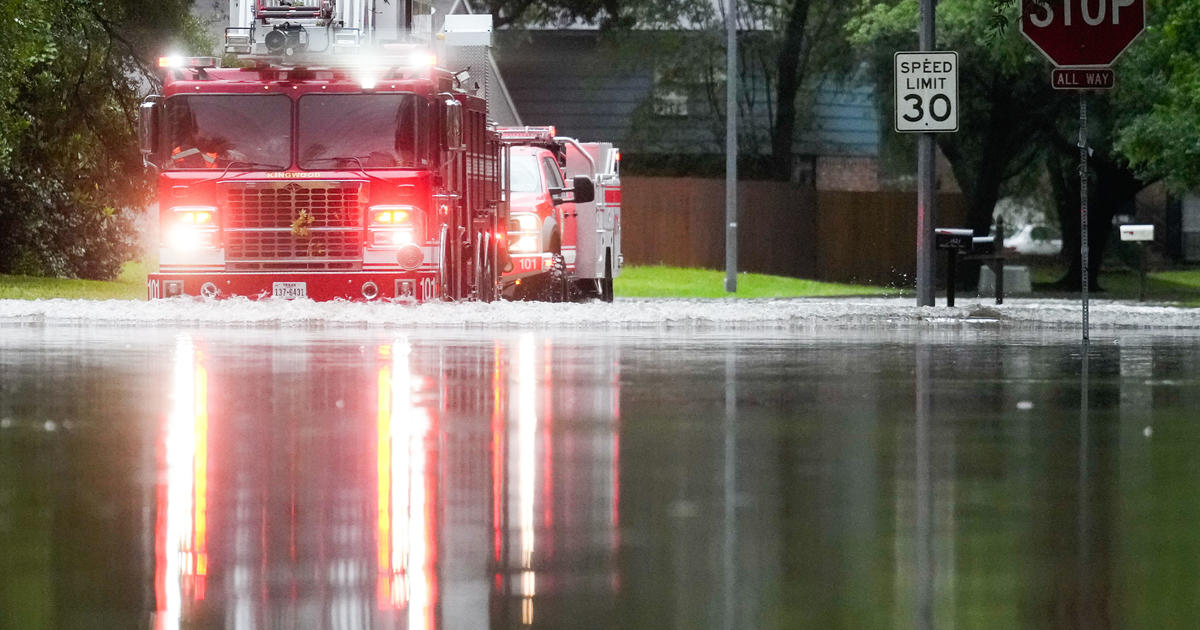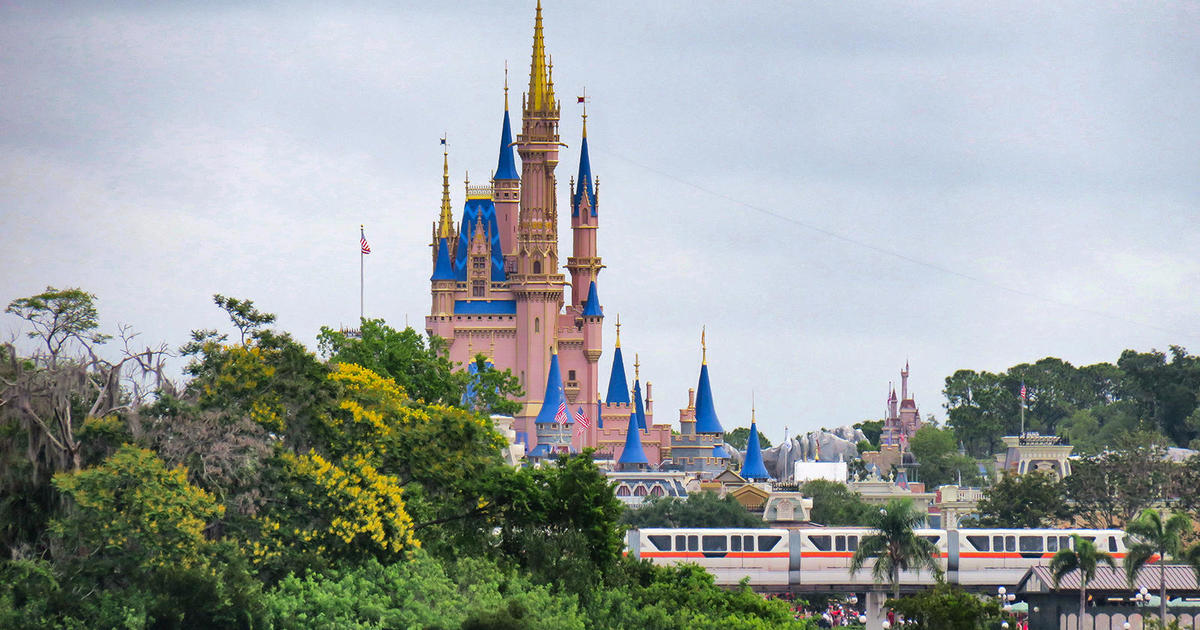Hundreds of rescues in Sally's wake as cleanup begins
Rescuers on the Gulf Coast used boats and high-water vehicles Thursday to reach people cut off by floodwaters in the aftermath of Hurricane Sally even as a second round of flooding took shape along rivers and creeks swollen by the storm's heavy rains.
Across southern Alabama and the Florida Panhandle, homeowners and businesses began cleaning up and officials inspected bridges and highways for safety, a day after Sally rolled through with 105 mph winds, a surge of seawater and 1 to 2-1/2 feet of rain in many places before it began to break up.
Sally sped up late Thursday, moving at 15 mph compared to its previous crawl of 3 and 5 mph but was still dumping heavy rains in southeastern Virginia and eastern North Carolina. As much as 8 inches of rain fell in central Georgia on Thursday.
At least two deaths were blamed on Sally, one in Alabama and one in Atlanta, where a tree fell on a home, killing a man inside, reports CBS Atlanta affiliate WGCL-TV.
In hard-hit Pensacola and surrounding Escambia County, where Sally's floodwaters had coursed through downtown streets and lapped at car door handles on Wednesday before receding, authorities went door-to-door to check on residents and warn them they were not out of danger.
"Please, please, we're not out of the woods even if we've got beautiful skies today," said Escambia County emergency manager Eric Gilmore.
Florida Gov. Ron DeSantis urged Panhandle residents not to let their guard down. "You're going to see the rivers continue to rise," DeSantis said after an aerial tour of the Panhandle.
Flying above the region with U.S. Customs and Border Patrol, CBS News saw how much devastation the hurricane left behind. One bridge in Pensacola was missing two large sections, likely because barges came loose and smashed into it. Roofs had been peeled away, boats were scattered, and some areas were cut off by downed trees or heavy flooding.
Most rivers fed by the storm were cresting in Alabama and the Panhandle on Thursday, although the Shoal, in Florida was still rising, said Steve Miller of the National Weather Service in Mobile, Alabama. Near Crestview, Florida, portions of Interstate 10 and U.S. Highway 90 - the two main roadways running east to west through the Panhandle - were closed because of flooding from the Shoal, the Florida Highway Patrol said.
Crews carried out at least 400 rescues in Escambia County, Florida, by such means as high-water vehicles, boats and water scooters, authorities said. Rescuers focused their efforts Thursday on Innerarity Point, a narrow strip of land close to Pensacola that is home to waterfront homes and businesses. Floodwaters covered the only road out.
Richard Wittig and his family were among scores of people hemmed in by floodwaters on an island at the tip of the point. Two generators powered his house.
"If I didn't have a working generator, we'd be dead. Nobody can get to us," said Wittig, 77. He said he and his son rely on oxygen machines to stay alive.
The Florida National Guard said it had deployed about 500 soldiers and airmen to help local authorities evacuate 113 people, though it did not say when and where the rescues took place.
In Alabama, on both sides of Mobile Bay, National Guard soldiers from high-water evacuation teams used big trucks Thursday to rescue at least 35 people, authorities said.
A volunteer rescue group based on Marcos Island, Florida, known as the Marcos Patriots, received three calls for help, including from an 80-year-old woman in Gulf Shores, Alabama, whose roof had blown off.
When a rescue team arrived, "she was safe and sound with a neighbor but her house was destroyed," said group co-founder ErinMia Milchman.
About 35 miles inland, a swollen Murder Creek cut off access between the Alabama towns of Brewton and East Brewton, inundating a grocery store, a tobacco shop, a park and more. Residents behind a police roadblock gazed at the neighboring city across fast-moving water covering a bridge.
East Brewton resident Brenda Davenport said it took only four hours for the water to rise. "It could take two days for it to go down," she said.
In Orange Beach, Alabama, Janice Sullivan swore she would never ride out a hurricane again. She and her daughter huddled in a second-floor bathroom as Sally blew ashore.
"You could hear everything hitting the house," she said. "You could hear the house moving back and forth. It was literally moaning and cracking."
A few people cleaned up in Bristol Park, a creekside neighborhood where as much as 4 feet of water filled brick homes north of Pensacola.
Susan Cutts' parents fled rising water inside their home into the garage, where they desperately called for help on a dying cellphone until aid arrived.
"They were on top of their car when they got to them," Cutts said.
Nearly 400,000 homes and businesses were still without power Thursday night, mostly in Alabama and Florida.
At a downtown marina in the Pensacola area, at least 30 sailboats, fishing boats and other vessels were clumped together in a mass of fiberglass hulls and broken docks. Some boats rested atop sunken ones.
